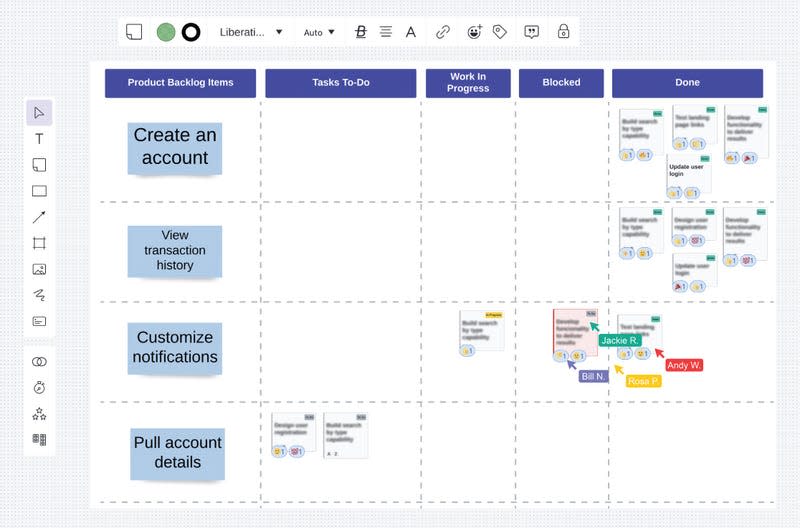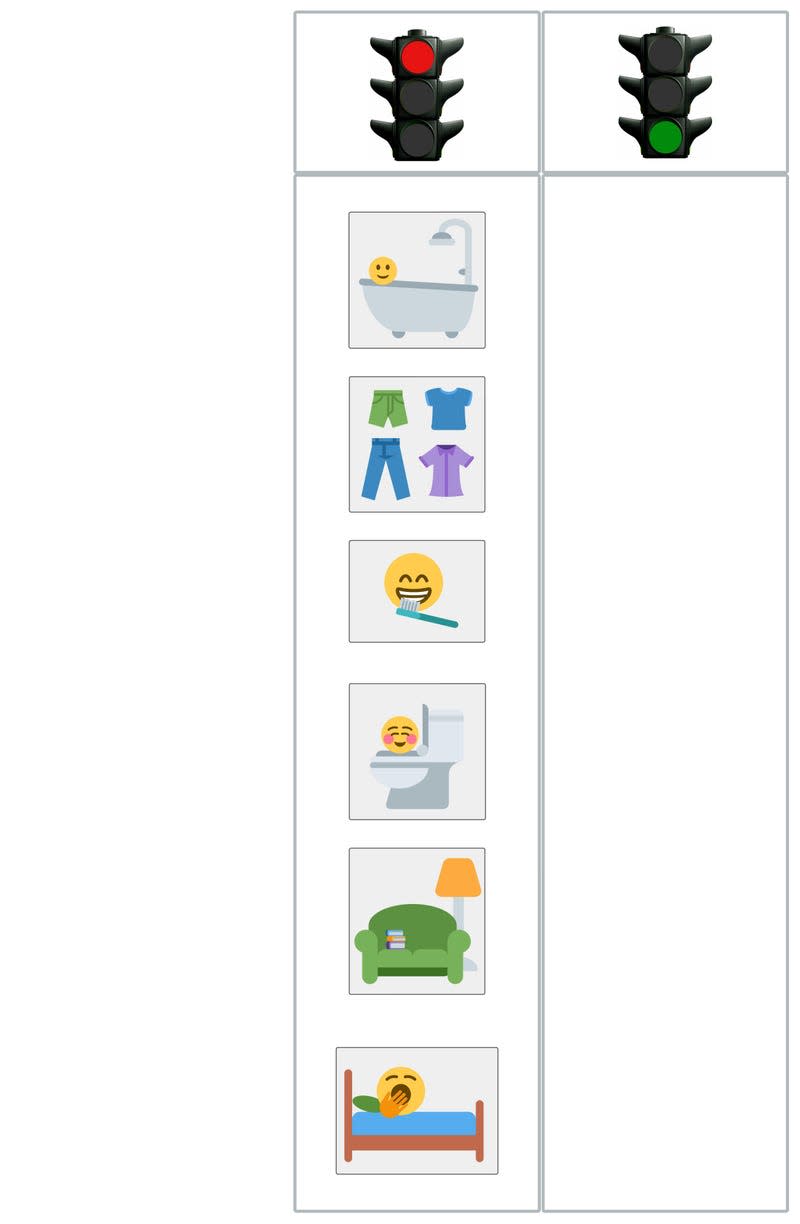Bedtime scrum and 6 practices to support neurodiversity at work and home
We are each surrounded by people who think and process information differently than us. Such is the case for my 21-year-old daughter and me. Early in her life, she began facing challenges with reading and spelling. The reasons for her struggles became clear when we later learned she had dyslexia. As a parent, I soon realized that while I saw words that formed the English language, she saw curves and lines that were more like artistic shapes.
Even today, as she thrives in the face of dyslexia, we make a great team. I may be able to spell words faster, but she surpasses me with her remarkable artistic, imaginative, and creative skills.
Read more
Parents at home, and even managers at work, may have similar relationships with someone who is neurodivergent. 15 to 20% of the world’s population is neurodiverse, including up to 10% of people who have dyslexia, 5% of people who are diagnosed with ADHD, and 2% diagnosed with autism.
As a parent and business leader, I’ve learned how to promote teamwork in a neurodiverse environment. I’ve also leveraged the values and principles of Agile and the practices of Scrum to encourage alignment and minimize confusion for team members who are neurodiverse. Organizations that embrace neurodiverse employees and champion agility can create an inclusive and collaborative environment for all their team members.
Recognizing and valuing neurodiversity at home and work
Neurodiversity refers to the infinite variation in human neurocognitive functioning. There is no standard for a healthy or normal brain and how it should take in information and make meaning.
As a father of four neurodivergent children—each has ADHD, two are dyslexic, and two are autistic (ASD)— I’ve seen them thrive despite facing various challenges that come their way. My spouse, Jennifer, and I are constantly learning more about supporting their needs and creating an environment that values each of their abilities. Our professional expertise has often sparked new ideas that also influence our parenting. A clinical social worker, Jennifer specializes in child and family therapy. I’ve spent 20 years leading cross-functional teams to collaborate in solving messy technical and human problems.
Like many humans, our kids struggle with executive functioning skills. They have to work very hard or may even be unable to plan, stay organized, initiate tasks, maintain focus, and manage time. Sounding more familiar now?
At home, just like at work, we provide them with structures or frameworks:
Timers and lists
Daily cycles, logs, and check-ins
Posted visual calendars and schedules
Frequent texts, calls, and in-person nudges
At work, I’ve been surrounded by teams of programmers, engineers, designers, analysts, and technologists of all kinds. Some of these colleagues think and process information very differently from one another—which often contributes to their incredible cognitive abilities and professional skills. Some have talked openly about their experiences with ADHD or ASD. Some connect and share in our Slack #neurodiversity channel.
Many neurodivergent individuals pursue careers in science, technology, engineering, and math. Research indicates that students on the autism spectrum study in all fields, but they participate in STEM at significantly higher percentages than the general population, with 34% of college students on the spectrum enrolling in STEM versus 22% of the general population.
Agile values, principles, and practices are central to the teams that have created many of the best innovations of the last two decades. There are lessons woven into this approach that will make a far larger impact than your latest go-to-market strategy.
6 Agile principles and Scrum practices that aid neurodivergent teams
As I’ve worked with neurodivergent technologists, we’ve identified and implemented practices, patterns, and protocols that improve the experience of everyone on the team—at home or work. Some examples include:
Establish patterns: Plan and execute work in iterations of a consistent duration, for instance, two weeks; ensure the collaborative team events within each iteration follow the same pattern and occur on the same days
Define success: Describe each work item in a way that satisfies the team’s needs, giving particular attention to defining how the team will know when an item is acceptable and done
Create transparency: Make the backlog of work items visible, empower the team to determine how they will do the work, and hold them accountable to decide on how much of the backlog they will achieve within the iteration

Meet daily: A brief standing meeting held at the same time and place each day increases communication and allows the team to assess progress and adapt plans as needed.
Inspect and adapt: Incorporate continuous improvement by retrospecting as a team on the successes and the struggles of a previous iteration, and plan an experiment that could make things better during the subsequent one
Build bonds: Be intentional about connecting and developing as a team; encourage trusting relationships to develop and persist; changes to team makeup should be rare
Bedtime Scrum, anyone?
When my children were younger, bedtime involved a chaotic dance between little ones and parents that resulted in more than a little frustration. However, things improved remarkably once we applied a simple version of the examples above. We called it “Bedtime Scrum,” and it centered around a chart that we made and hung in the hallway outside the kids’ bedrooms. On the chart were two columns, one headed by a red light and one with a green light. Next, we placed cards with images of each bedtime task in the red light column. The final item in the list of cards was the one for a bedtime story.

Within two nights, the kids understood that to get a bedtime story, they must complete all the items on the cards and move them over to the column with the green light. They took such delight in rushing to the chart to complete each item. The results were amazing! My role quickly changed from a frazzled bedtime goalie to an observer in a rocking chair, calmly waiting for story time as the little ones self-managed their tasks. The same is true for this application at work.
Leveraging diversity for the long-run
Just because a person thinks differently than you doesn’t mean those thoughts aren’t valuable. If they contribute to solving a problem differently than you do, it doesn’t mean their contributions aren’t valuable. As business leaders, we must apply curiosity, look past the hurdles flagged by our biases and cultural constructs, and see the potential in a neurodivergent employee.
The good news for today’s managers, supervisors, and c-suite execs, is that many business leaders have an affinity for the structures and benefits of Agile principles and practices. If these leaders lean into these principles with a mindset of inclusivity, they can create a diverse environment that is safe, collaborative, and productive.
Bryan Stallings is the chief evangelist at Lucid Software where he leverages over 20 years of experience in co-creating adaptive and people-centered organizations that excel at solving complex technical and human problems. He is a thought leader in the Agile product development community, and has trained, mentored and coached hundreds of individuals, teams and organizations in the Agile mindset and Scrum practices. Bryan holds an International MBA, is a professional facilitator, Certified Scrum Trainer (CST), certified Co-Active coach, and trained Organization and Relationship Systems coach (ORSC). In his personal life, Bryan is a father of four, a passionate chef of family meals, and an avid organic vegetable gardener.
More from Quartz
Sign up for Quartz's Newsletter. For the latest news, Facebook, Twitter and Instagram.


